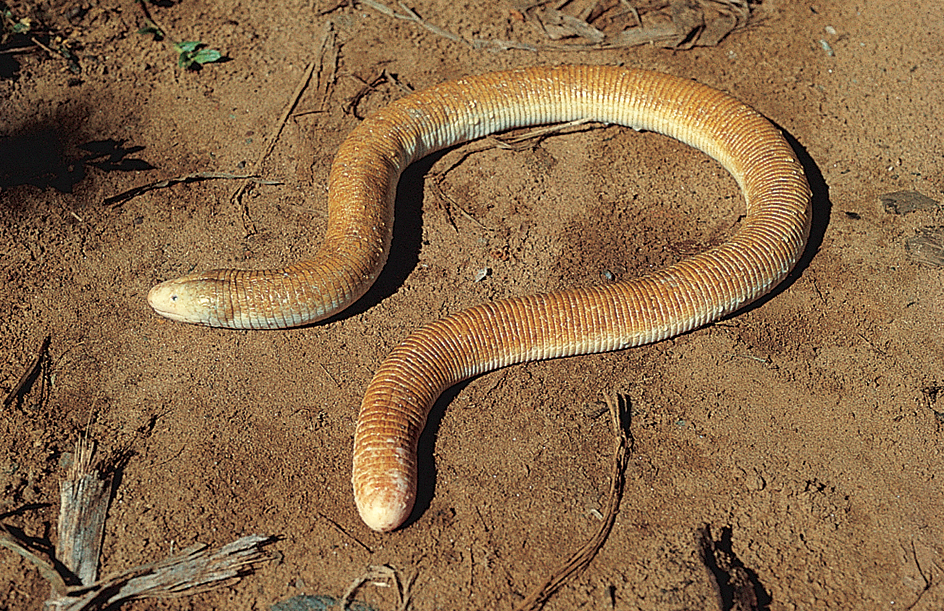Amphisbaenian << `AM` fihs BAY nee uhn >> also known as worm lizard, is any of a group of wormlike, burrowing reptiles related to lizards and snakes. Dozens of amphisbaenian species (kinds) live in warm regions around the world, largely in Africa, South America, and southern North America.

Adult amphisbaenians range from about 3 to 30 inches (8 to 76 centimeters) long. All species have long bodies with tiny eyes. An amphisbaenian’s thick, bony skull helps it dig tunnels through the soil. Its loose skin enables it to travel underground using rectilinear motion. In this motion, the reptile moves part of its skin forward and anchors it against the tunnel walls. It then uses muscles to move the rest of its body forward with the skin. Most amphisbaenians have no limbs. However, a few Mexican species have well-developed front limbs with toes and claws for digging.
Most amphisbaenians lay eggs, but a few kinds give birth to live young. All species are effective predators (hunting animals), using good hearing and strong jaws to find and capture prey. The reptiles feed primarily on such small animals as worms and insects.
